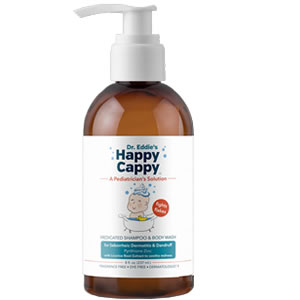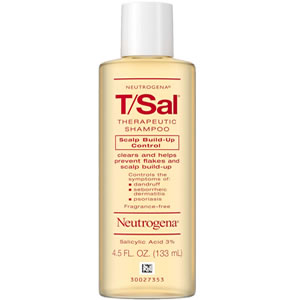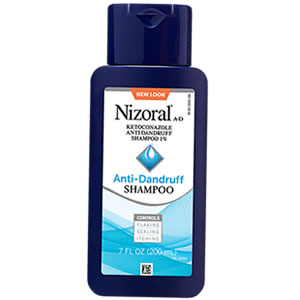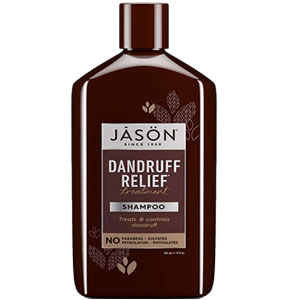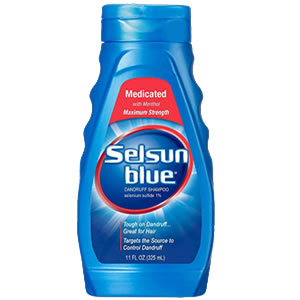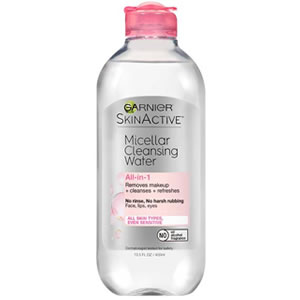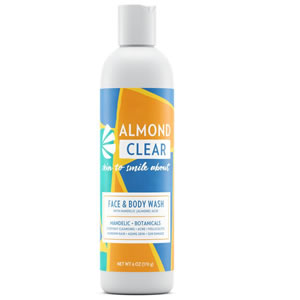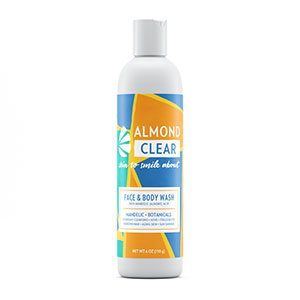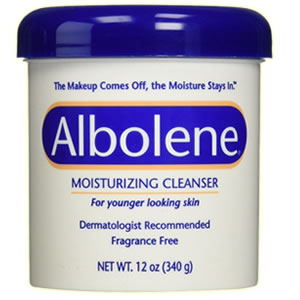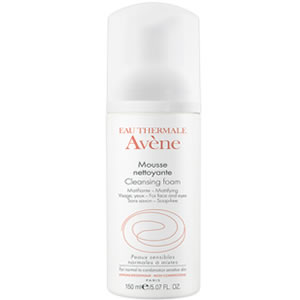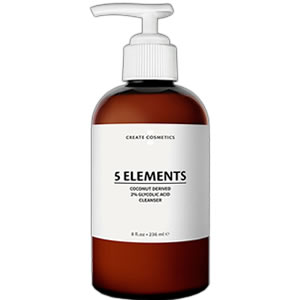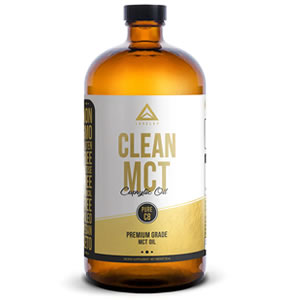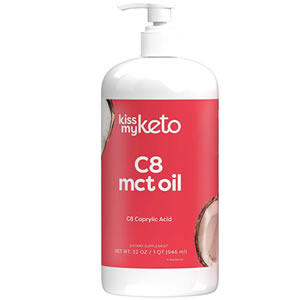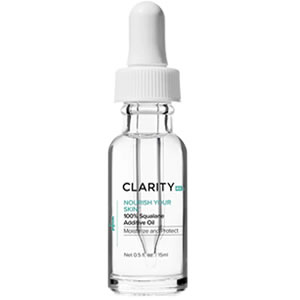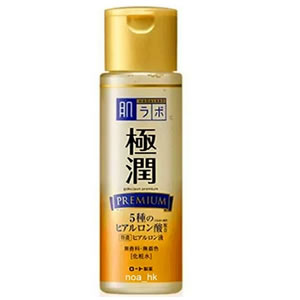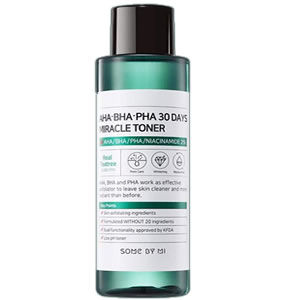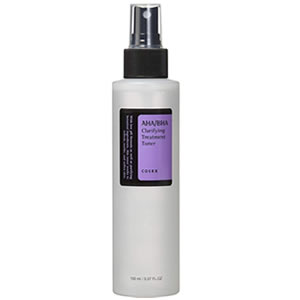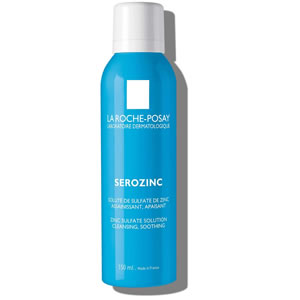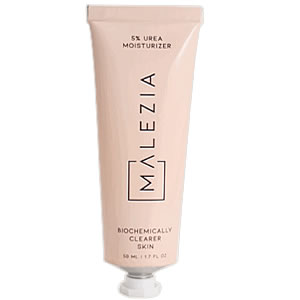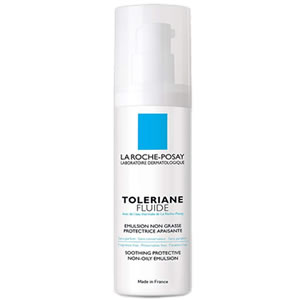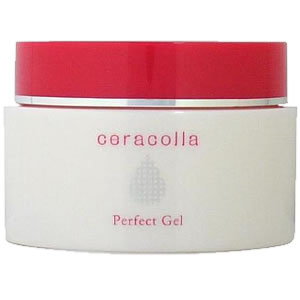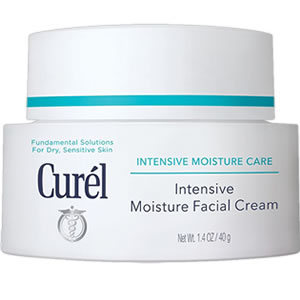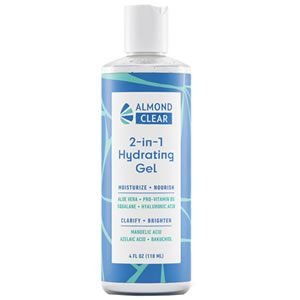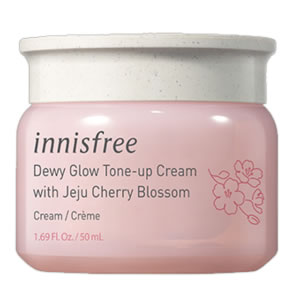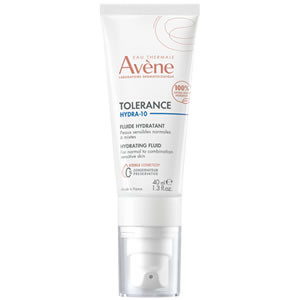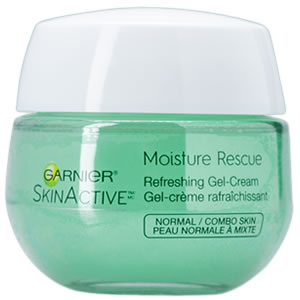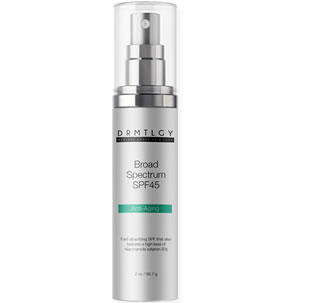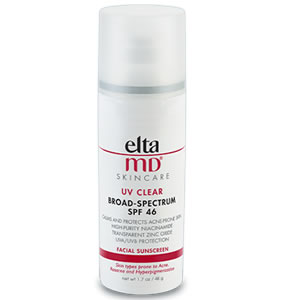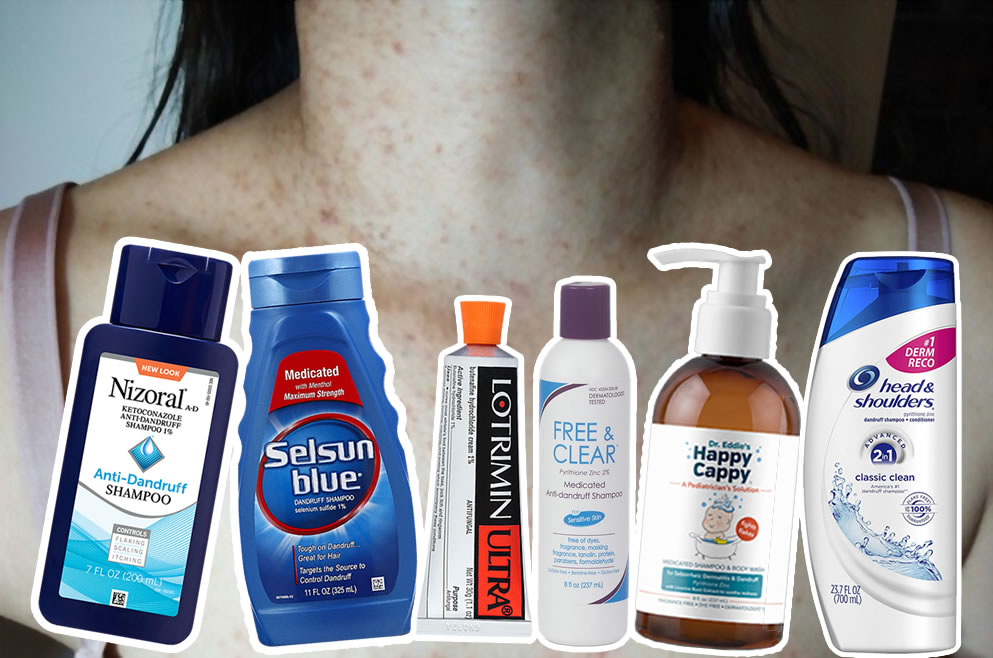
In This Article-
Table Of Contents
- What Is Fungal Acne?
- Is it Bacterial or Fungal Folliculitis?
- Why is My Acne Itchy?
- Can fungal acne be cured?
- What Kills Malassezia Yeast?
- How do Dermatologists Treat Fungal Acne?
- Treatment at Home – How do you get rid of fungal acne?
- Common fungal acne Ingredients
- Shop the Best Fungal Acne Treatments
- Can Head and Shoulders Treat Fungal Acne?
- Can Ketoconazole Cream Treat Fungal Acne?
- Can Clotrimazole Cream be Used on the Face?
- Nizoral: The #1 Go-To Treatment For Fungal Acne (Pityrosporum Folliculitis)
- Treating Fungal Acne on Your Head
- Fungal Acne Relapses
- When to See a Dermatologist?
- Other Fungal Acne / Acne Articles
When you need to get rid of fungal acne quickly, antifungal therapy is a must. This includes oral antifungals and topical treatments prescribed by a board-certified dermatologist.
This duo therapy approach effectively targets and eliminates the yeast infection within the hair follicles. As a result, there are fewer active pimples on the skin, and they heal faster from these acne-like breakouts.
This type of “acne” is caused by Malassezia yeasts, which causes a condition known as Malassezia folliculitis. That’s what sets it apart from acne vulgaris, the common type of acne usually caused by excess sebum production.
Other antifungal treatments can be over-the-counter antidandruff shampoos containing antifungal agents like Pyrithione Zinc and Selenium Sulfide.
What Is Fungal Acne?
The first thing to know about fungal acne is that it’s not actually acne (acne vulgaris). It is called “fungal acne” because the breakouts do resemble acne—and because of that resemblance, it’s often misdiagnosed, which leads to a lot of frustration.
These fungal acne breakouts typically consist of itchy, tiny pimple-like bumps and can occur anywhere that acne can occur, with the upper chest, upper arms, upper back, and shoulders being the most common areas. Although not as common, the face and forehead are other areas where yeast overgrowth can occur.
If you want to learn more about this fungal skin infection, refer to our very in-depth article on fungal acne.
Is it Bacterial or Fungal Folliculitis?
One of the warning signs of fungal folliculitis is pimples that don’t respond to typical acne medications. If you find yourself breaking out from everything—creams, toners, moisturizers—that could be another indication that you have fungal acne.
Because it looks so similar to bacterial acne, one of the best ways to find out if you have this condition is a diagnosis from your healthcare professional.
Why is My Acne Itchy?
If your acne is itchy, this is a very good sign you may be dealing with pityrosporum folliculitis. Acne vulgaris, or “common” acne, isn’t really itchy. Fungal folliculitis, on the other hand, is frequently associated with extremely itchy skin in the affected areas.
Also, see our previous post on What Itchy Acne Could Mean
Can fungal acne be cured?
As mentioned earlier, fungal acne is a skin condition that occurs due to an overgrowth of yeast on the skin. This can lead to redness, itching, and scaling of the skin.
While there is no cure for this condition, there are malassezia treatment protocols that can help to control the symptoms. These include antifungal agents: antifungal cream/lotions, corticosteroid creams, and immunomodulators.
In severe cases, systemic therapy with antifungal drugs may be necessary.
What Kills Malassezia Yeast?
Affiliate Disclosure: We may earn a small commission if you buy products through our links.
There are many products that can help in clearing this skin condition or at least slow its growth. These would be active antifungal agents such as:
While some of these products may be available as a prescription, you can find many over-the-counter topical treatments that kill Malassezia yeasts and other fungal species.
And what kills Malassezia yeast on the scalp?
Dandruff shampoos containing antifungals like Selenium Sulfide or Ciclopirox Olamine can be very effective!
How do Dermatologists Treat Fungal Acne?
In most cases, they will make recommendations for a fungal acne skincare routine and prescribe a prescription medication. Topical creams and ointments are the most common malassezia treatment therapies.
In more severe cases, a dermatologist may prescribe an oral antifungal medicine to start working deep within the hair follicles from the inside out, rapidly clearing up the Malassezia folliculitis (MF) lesions.
Treatment at Home – How do you get rid of fungal acne?
Treating and preventing fungal blemishes and infections can be tricky, which can make your pimples seem super stubborn if you are trying to use regular acne products to clear your skin.
Cleanliness is key.
Shower frequently. If you sweat frequently after exercising, try showering after work or at work. Avoid wearing sweaty workout clothes. Instead, wear loose clothing.
You want to do this for two reasons:
Yeast thrives in moist environments
Excessive sweating can trigger and accelerate yeast growth in areas where you develop fungal acne.
After that, the next step is to look at things to eliminate from your daily routines.
If you’re looking for a natural treatment for fungal acne, start with your skincare regimen. People who use a lot of different skincare products may wish to start a new skincare routine from scratch with products not known to make fungal acne worse.
Look into fungal acne shampoo and other antifungal products designed for use with skin and hair. This includes things like athlete’s foot creams and dandruff shampoos that contain Ketoconazole.
Common fungal acne Ingredients
What ingredients help fungal acne? Conversely, there may be some ingredients to avoid because they can do more harm than good. Below, you’ll find a list of ingredients and how they can help—or harm—your fungal acne treatment.
Ketoconazole:
This is an antifungal and one of the most effective treatment options out there. It can be given orally and topically, and you’ll find this ingredient in many dandruff shampoos.
Tea Tree Oil:
Several studies have shown tea tree oil [1, 2, 3] to have potent antimicrobial properties against Malassezia. This is an excellent option that kills Malassezia yeasts naturally. However, be sure to use tea tree oil from the Melaleuca Alternifolia plant species, as this is the oil that has been studied. Never apply tea tree oil directly to the skin; always dilute with a carrier oil like MCT Oil.
Apple Cider Vinegar:
ACV is often touted as a cure for not only fungal acne but also a variety of other skin conditions.
However, this is one ingredient to avoid if you are allergic to fermented products. It can also cause skin irritation, particularly on sensitive skin, so that is something to watch out for. On the plus side, it can restore the skin’s pH level back to neutral.
Salicylic Acid:
Topically, the B.H.A. properties result in the exfoliation of the outermost layer of the skin, removing dead skin cells and fungi without the need for antifungals.
But! It’s a powerhouse when it comes to treating normal acne (acne vulgaris).
Glycerin:
Contrary to popular belief, Glycerin is NOT a fungal acne trigger. It is the mixture of Glycerin with other problematic lipids that cause yeast breakouts. Research on Glycerin is sporadic, but at least a couple of studies show that it can help with Malassezia folliculitis.
One study showed that in the correct concentrations (high), a 10% Glycerin solution was effective in reducing Malassezia on the skin. Alternatively, you may browse all of our glycerin-free picks here.
Honey:
Honey is one of those ingredients that is good for pathogens in general. Much research shows that different types of honey inhibit staph, E. coli, and other pathogens. Some research suggests honey might be useful for seborrheic dermatitis and dandruff, two conditions associated with Malassezia folliculitis (fungal acne). It is also very hydrating to the skin.
Rosehip Oil:
Although a very potent antioxidant, rosehip oil is an ingredient to avoid since it is rich in polyunsaturated fatty acids, chiefly linoleic acid and linolenic acid, which can promote Malassezia growth.
Coconut Oil:
Similar to rosehip oil, coconut oil is one to steer clear of, even though some recommend it. It contains 47% lauric acid, which Malassezia loves!
Green Tea Extract:
Green tea contains catechins, which are antifungal and antimicrobial compounds that aid in the reduction of bacteria and fungi on the skin. Baths with 5% pure green tea extract three times per week have demonstrated a reduction in Malassezia species and promote the effective healing of eczema-prone skin. [5]
Aloe Vera:
Aloe is well known for its anti-inflammatory and soothing properties. Unfortunately, we are just not convinced enough to say it is a practical solution for treating fungal acne.
In one study, it was only effective at halting growth and not eradicating it. Also, for it to be effective, a relatively high concentration was required. It can also irritate the skin and is easy to spoil.
Sulfur:
Sulfur is a keratolytic agent, meaning it removes dead skin. This type of exfoliation aids in the removal of fungus from the skin.
The specific action of sulfur on fungi is not yet fully understood, so we cannot elaborate on that.
But just like Salicylic Acid, Sulfur can be used on skin that is free of Malassezia lesions in place of antifungal shampoos or creams, shedding dead skin and fungus cells from the skin.
Also, see our previous post Unlocking the Benefits of Sulfur for Fungal Acne
Azelaic Acid:
Interestingly, this ingredient is a by-product of Malassezia. While studies suggest that azelaic acid effectively treats rosacea acne, both inflamed and hormonal acne, there is no substantial evidence to declare it a “fungal acne” treatment officially.
With that said, here’s how it might be beneficial for fungal acne-prone skin. It goes to work by reducing the free fatty acid content in your skin, leading to a reduced growth rate of Malassezia yeast pimples on the skin.
Antifungal agents possess this free-fatty-acid-reducing property as well. Also, Malassezia is an aerobic organism, and Azelaic acid has been demonstrated to work on both anaerobic and aerobic microorganisms, which means it could also work on a fundamental level to reduce fungal acne yeast colonies.
Benzoyl Peroxide:
While Benzoyl Peroxide has been shown to help with acne, ingrown hairs, and seborrheic dermatitis, there is no evidence that it has any effect on the Malassezia fungus. It may even cause dehydration in some people, causing more harm than good, as Malassezia thrives in the presence of a faulty skin barrier, causing you to experience fungal acne-like breakouts.
Also, see our previous post: Benzoyl Peroxide for Fungal Acne
The Best Fungal Acne Ingredient Checker
If you need details on any other ingredients not on the list above, then be sure to try our handy skincare ingredient checker, an ingredient analyzer tool that gives you specific info on the fungal acne status of the ingredients you enter into it.
Shop the Best Fungal Acne Treatments
Looking for some good fungal acne products to try? Below, you’ll find a list of some favorites for all skin types—sensitive, dry, oily, normal, and combination skin.
Anti-Fungals that address the buildup of yeast in your hair follicles.
For Sensitive Skin Types, 2 Options:
For Dry Skin Types, 2 Options:
For Oily Skin Types, 3 Options:
For Normal & Combination Skin Types, 2 Options:
Fungal Acne Safe Face Wash, Cleansers & Micellar Water
For Sensitive Skin Types, 3 Options:
For Dry Skin Types, 2 Options:
For Oily Skin Types:
For Normal & Combination Skin Types, 2 Options:
We’ve also put together a fantastic resource on safe cleansers and face washes for fungal acne.
Fungal Acne Safe Oils/Oil Cleansers
For All Skin Types, 3 Options:
Fungal Acne Safe Toners
For Sensitive Skin Types, 2 Options:
For Dry, Combination & Normal Skin Types, 2 Options:
For Oily Skin Types, 3 Options:
Safe Moisturizer For Fungal Acne-Prone Skin
For Sensitive Skin Types, 4 Options
For Dry Skin Types, 3 Options:
For Oily Skin Types, 3 Options:
For Normal & Combination Skin Types, 4 Options:
Fungal Acne Safe Sunscreens
For Sensitive, Normal & Combination Skin Types, 2 Options:
For Dry Skin Types, 2 Options:
For Oily Skin Types, 3 Options:
Can Head and Shoulders Treat Fungal Acne?
Yes, Head and Shoulders can treat fungal acne! This is a dandruff shampoo containing zinc pyrithione, which is an antifungal and keratolytic agent.
Can Ketoconazole Cream Treat Fungal Acne?
2% Ketoconazole is one of the most effective fungal acne treatments out there. It usually comes as a shampoo containing 1% ketoconazole, but creams with ketoconazole are effective for treating fungal acne in areas other than the scalp.
Can Clotrimazole Cream be Used on the Face?
We do not recommend using clotrimazole cream to treat fungal acne on the face. Besides, it has lower antifungal activity against Malassezia, which is why ketoconazole is recommended as the top treatment.
Nizoral: The #1 Go-To Treatment For Fungal Acne (Pityrosporum Folliculitis)
If you’re looking for a go-to treatment, try Nizoral for fungal acne. This is an anti-dandruff shampoo that contains ketoconazole.
How long does it take for Nizoral anti-dandruff shampoo to work on fungal acne?
The usual recommendation is to use it twice weekly for four weeks. Then, once every two weeks after your skin has cleared up for maintenance.
Because Nizoral has the potential to be drying, it’s a good idea to use an oil-free moisturizer like this Ultra-Lightweight 2-in-1 Hydrating Gel Moisturizer to rehydrate and revitalize the skin.
Treating Fungal Acne on Your Head
The chest, back, and shoulders are the most common areas for fungal acne to appear, but it can affect the face and scalp, too. For the scalp, anti-dandruff shampoos containing an antifungal like ketoconazole or zinc pyrithione are the best bet. Products include Nizoral, Head and Shoulders, and Free and Medicated Anti-Dandruff Shampoo.
For the face, creams, cleansers, and pads containing antifungal agents will work. Happy Cappy Medicated Shampoo & Body Wash is one example containing 2% zinc pyrithione and Chlorhexidine Cleansing Wipes (1% Ketoconazole).
Fungal Acne Relapses
You’ve had your fungal acne treated, but can it relapse? Yes—relapses are quite common. They’re marked by new breakouts, itchiness, and other fungal acne symptoms you’ve experienced before.
That’s because Malassezia is always present on human skin, and sweat, certain skincare products, or even dietary factors can cause an overgrowth.
It is possible to avoid or limit a re-occurrence, however. Once you’ve cleared the fungal acne, continue using an antifungal like ketoconazole intermittently to keep Malassezia under control. Keratolytics such as Salicylic Acid & Sulfur can also play a role in keeping your skin fungal acne-free.
When to See a Dermatologist?
If you’ve never had fungal acne or your pimples aren’t going away with home treatments, it’s time to see a dermatologist.
A skin scraping test or a comedone content analysis under a microscope may be used by a dermatologist to identify the condition conclusively.
Other Fungal Acne / Acne Articles
- The Best Moisturizers for Fungal Acne in 2023
- Safe Moisturizer Alternatives to Avene Tolerance Extreme Emulsion
- Forehead Fungal Acne
- Fungal Acne-Safe Toners Your Skin Will Love
- Fungal Acne Cleansers – An Updated List
- Best Sunscreens for Fungal Acne
- The Importance Of Patch Testing Skincare Products
- Top-Rated Benzoyl Peroxide Face Wash for Acne
- Malezia Skincare: A Game-changer for Fungal Acne
- Best Antifungal Cream for Face Acne
- Sebaceous Hyperplasia Treatment at Home
- https://www.ncbi.nlm.nih.gov/pmc/articles/PMC3970831/
- Malassezia (Pityrosporum) Folliculitis – J Clin Aesthet Dermatol – 2014 Mar; 7(3): 37–41.
- American Journal of Clinical Dermatology volume 20, Pages 335–344 (2019)
- https://medicaljournalssweden.se/actadv/article/view/5601
- Malassezia, dandruff and seborrhoeic dermatitis: an overview. Br. J. Dermatol
- https://simpleskincarescience.com/pityrosporum-folliculitis-treatment-malassezia-cure/
- Skin diseases associated with Malassezia species. J. Am. Acad. Dermatol. Gupta A, Batra R, Bluhm R, Boekhout T, Dawson L.
- Three etiologic facets of dandruff and seborrheic dermatitis: Malassezia fungi, sebaceous lipids, and individual sensitivity. J. Investig. Dermatol. Symp. Proc. DeAngelis Y, Gemmer C, Kaczvinsky J, Kenneally D, Schwartz J, Dawson T. 2005.
- Malassezia and the Skin, Science and Clinical Practice Boekhout, T., Guého-Kellermann, E., Mayser, P., Velegraki, A. (Eds.)

